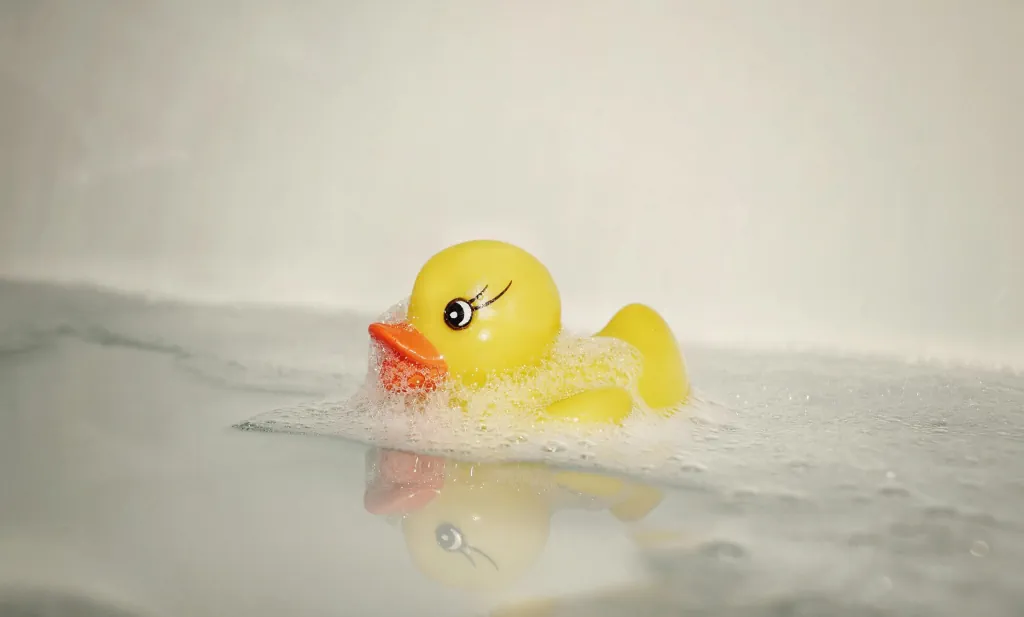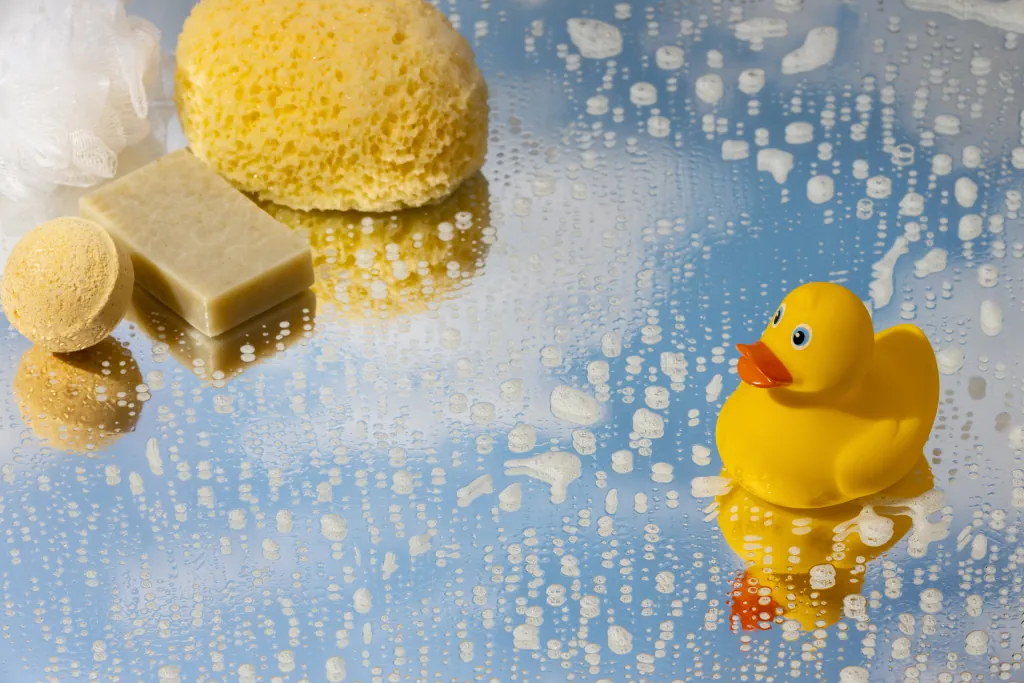Why Proper Toy Cleaning Matters
Baby toys are constantly exposed to drool, food, dust, and germs. From teething rings to plush animals, these items often end up in babies’ mouths and on the floor—making them hotspots for bacteria and allergens. Proper cleaning is not just about appearance; it’s essential for keeping your baby safe and healthy. In 2025, with an increased focus on non-toxic cleaning solutions and natural disinfectants, knowing how to clean baby toys the right way has become a parenting priority. This guide offers practical, safe, and effective steps to clean different types of toys while extending their lifespan and ensuring your baby plays in a clean environment.

How Often Should You Clean Baby Toys?
How frequently you should clean your baby’s toys depends on how and where they are used:
- Daily Cleaning: For toys that end up in your baby’s mouth or are used during mealtime (e.g., teething toys, pacifiers).
- Weekly Cleaning: For frequently handled toys such as rattles, blocks, and plush toys.
- Monthly Deep Cleaning: For toys that are not used regularly or are mostly decorative.
- After Illness: Always disinfect toys thoroughly after your child or another household member has been sick.
Creating a simple cleaning schedule can make the task less overwhelming. You might consider setting a weekly routine for washing soft toys and rotating plastic and wooden toys through a monthly disinfecting cycle.
General Safety Tips Before Cleaning
Before diving into cleaning methods, follow these safety guidelines:
- Read the Label: Always check the manufacturer’s instructions. Some toys are not machine washable or may be damaged by high heat.
- Avoid Harsh Chemicals: Stay away from bleach, ammonia, and alcohol-based cleaners unless explicitly marked baby-safe.
- Use Natural Alternatives: Vinegar, baking soda, and baby-safe disinfectants are gentle and effective.
- Remove Batteries: For electronic toys, always remove batteries before cleaning to prevent corrosion and short circuits.
- Test for Damage: Inspect toys for any signs of wear and tear that may pose a choking hazard after cleaning.
Proper preparation ensures that toys are both clean and safe for baby use after each cleaning session.
How to Clean Plastic Baby Toys
Plastic toys are some of the easiest to clean due to their durable, waterproof materials. Follow these steps:
- Soap and Water: Mix a mild baby-safe dish soap with warm water. Use a soft sponge or cloth to wipe down the surface, paying close attention to crevices.
- Dishwasher Safe?: Many plastic toys without batteries can go in the dishwasher. Use the top rack and a baby-safe detergent.
- Sanitizing: For extra protection, create a solution of 1 part white vinegar to 4 parts water. Soak the toys for 15 minutes and let them air-dry.
- Drying: Ensure toys are completely dry before giving them back to your child, especially if they contain water-tight compartments.
Avoid boiling plastic toys, as this can cause them to warp or release unwanted chemicals.

How to Clean Fabric and Plush Toys
Fabric toys absorb moisture and harbor bacteria more easily, so regular cleaning is essential:
- Machine Washable: Check the label. Most plush toys can go in the washing machine using a gentle cycle with cold or warm water.
- Use Laundry Bags: Place toys in a mesh laundry bag or pillowcase to protect them from damage during the spin cycle.
- Drying: Air drying is safest to prevent shrinkage. However, if the label allows, tumble drying on low heat can help kill germs.
- Surface Cleaning: For delicate or non-machine washable toys, use a cloth dampened with a mild soap solution to spot-clean.
Sprinkling baking soda and letting it sit for 15 minutes before vacuuming can help freshen up plush toys between washes.
How to Clean Wooden Baby Toys
Wooden toys are natural and often treated with non-toxic finishes, but they require extra care to preserve their quality:
- Avoid Soaking: Never submerge wooden toys in water, as this can cause swelling, cracking, or mold.
- Damp Cloth: Wipe toys with a damp (not wet) cloth and a mild soap or vinegar solution.
- Dry Immediately: Use a dry towel to wipe off excess moisture and allow to air-dry fully before use.
- Oil Treatment: Occasionally, condition the wood with a food-grade mineral oil or beeswax polish to maintain its finish and prevent splintering.
Wooden toys may last for generations if cleaned and maintained properly.
How to Clean Electronic and Battery-Operated Toys
These toys often have crevices and electronic components that can be damaged by water, so careful cleaning is required:
- Power Down: Remove batteries and unplug any charging components.
- Surface Wipe: Use disinfecting wipes or a cloth lightly dampened with a water-vinegar solution.
- No Immersion: Never submerge electronic toys in water.
- Dry Completely: Let the toy sit out to ensure it is completely dry before reinserting batteries.
For stubborn grime in small crevices, use a cotton swab dipped in a gentle cleaning solution.
Natural and Baby-Safe Cleaning Products
Choosing the right products is essential for protecting your baby’s health:
- White Vinegar: A natural disinfectant that kills bacteria and breaks down dirt.
- Baking Soda: Great for absorbing odors and mild abrasives for scrubbing.
- Castile Soap: A gentle, vegetable-based soap ideal for sensitive surfaces.
- Lemon Juice: Natural antibacterial and leaves a fresh scent.
Alternatively, you can buy baby-safe cleaning sprays that are fragrance-free, plant-based, and dermatologist-tested.
DIY Spray Recipe:
- 1 cup white vinegar
- 1 cup distilled water
- 1 tablespoon baking soda
- Optional: A few drops of lavender or tea tree essential oil (only if safe for baby contact)
Common Mistakes to Avoid When Cleaning Baby Toys
Even with good intentions, some practices can do more harm than good:
- Over-Wetting Toys: Especially for wooden and electronic toys, this can cause mold or damage.
- Using Harsh Chemicals: These can leave residues that are harmful if ingested.
- Skipping Rinse Steps: Always rinse off any cleaning product to avoid residue buildup.
- Not Checking for Damage: Post-cleaning inspections help you catch any broken parts.
- Improper Drying: Damp toys can become breeding grounds for mold and mildew.
Always prioritize both cleanliness and safety in your routine.
Looking for a fast and chemical-free way to sanitize your baby’s toys? This video shows how the Dupray steam cleaner effortlessly refreshes and cleans plastic and soft toys, eliminating germs and odors in just minutes. Watch how it works and see why steam is a safe, eco-friendly alternative to traditional cleaning methods.
Author: Dupray
FAQs About Cleaning Baby Toys
Can I use vinegar to clean baby toys?
Yes, vinegar is an effective and natural cleaner. Mix 1 part vinegar to 4 parts water for a safe solution.
Are dishwashers safe for baby toys?
Many plastic toys without electronics can go on the top rack of a dishwasher. Check the label first.
How often should I clean plush toys?
Plush toys should be cleaned at least once a month or more frequently if visibly dirty or used often.
Can I disinfect toys after illness?
Yes, soak or wipe with baby-safe disinfectant and ensure they dry completely before reuse.
What cleaning products should I avoid?
Avoid bleach, ammonia, and scented multi-surface cleaners not labeled as baby-safe.
Conclusion: Keeping Toys Safe and Hygienic
Cleaning baby toys may seem like a small task, but it plays a crucial role in maintaining your child’s health. Whether it’s plush toys, plastic rings, or electronic learning tools, each type of toy has its unique cleaning method that balances safety, effectiveness, and longevity.
By using baby-safe and natural cleaning products, creating a regular cleaning schedule, and paying attention to product care instructions, you can keep your baby’s play environment clean and germ-free in 2025. A clean toy is a safe toy—and a happy, healthy baby is always worth the effort.
Read also the article: How to Properly Bathe a Baby: Essential Safety and Care Tips for New Parents and Best Baby Strollers for Newborns in 2025: Safe, Stylish & Parent-Approved Picks and Best Diapers for Newborns in 2025 and Breastfeeding in 2025: Tips for a Successful Start
Note: This article is for informational purposes only and is not a substitute for professional advice. While every effort has been made to ensure that the content is accurate and useful, the portal does not guarantee the complete accuracy of all information. For specific cases and personalized solutions, we recommend consulting with a licensed professional in the relevant field.
